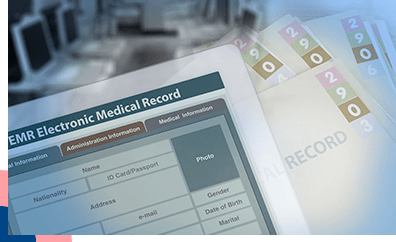Our Statistical Consulting and Data Science teams offer in-depth expertise on the implementation of external/synthetic control arms for clinical studies where there may be operational constraints on patient populations.
Synthetic control arms enable data from external sources to be used to enrich the population of a study. Sources for this can include real-world data from electronic health records, health insurance claims, fitness trackers, disease registries, and historical and clinical trial data. Successful integration of external data requires early statistical input when designing and analysing studies seeking to exploit these strategies. To address common issues, the FDA has published a draft guidance for the design and conduct of externally controlled trials.

When can external data be used?
Using external data in a control arm can be useful when there are population constraints. This can be due to the indication of interest being rare, difficulties with recruitment or ethical issues. Integration of external data must be statistically rigorous to meet the needs of regulators.

What considerations are involved?
The proposed study design, external data sources and statistical analysis approach need to be closely considered to avoid bias and ensure that robust comparisons can be made. Engaging with regulators helps to interrogate and justify these choices early, ensuring a successful study.

What are the key benefits?
Synthetic control arms can ease study population issues, increasing efficiency while reducing delays and costs. They also offer a low-risk hybrid trial design approach to integrating real-world data into studies and can decrease late-stage failure by informing go/no go development decisions.

When can external data be used?
Using external data in a control arm can be useful when there are population constraints. This can be due to the indication of interest being rare, difficulties with recruitment or ethical issues. Integration of external data must be statistically rigorous to meet the needs of regulators.

What considerations are involved?
The proposed study design, external data sources and statistical analysis approach need to be closely considered to avoid bias and ensure that robust comparisons can be made. Engaging with regulators helps to interrogate and justify these choices early, ensuring a successful study.

What are the key benefits?
Synthetic control arms can ease study population issues, increasing efficiency while reducing delays and costs. They also offer a low-risk hybrid trial design approach to integrating real-world data into studies and can decrease late-stage failure by informing go/no go development decisions.
Common questions around the use of external controls addressed by our Statistical Consulting and Data Science teams include:
So, if you:
- have logistical or ethical constraints in recruiting a control arm and are concerned that this will cause recruitment challenges
- have historical clinical trial data and/or access to real world data but are unsure of how to utilise this in designing your study
- want to design an efficient clinical trial which considers your bespoke constraints
- want to run a single arm study but are apprehensive about regulatory interactions and how to quantify the benefits and risks of the design
…our teams can help. Book a consultation to find out more about our expertise in synthetic control arms.










